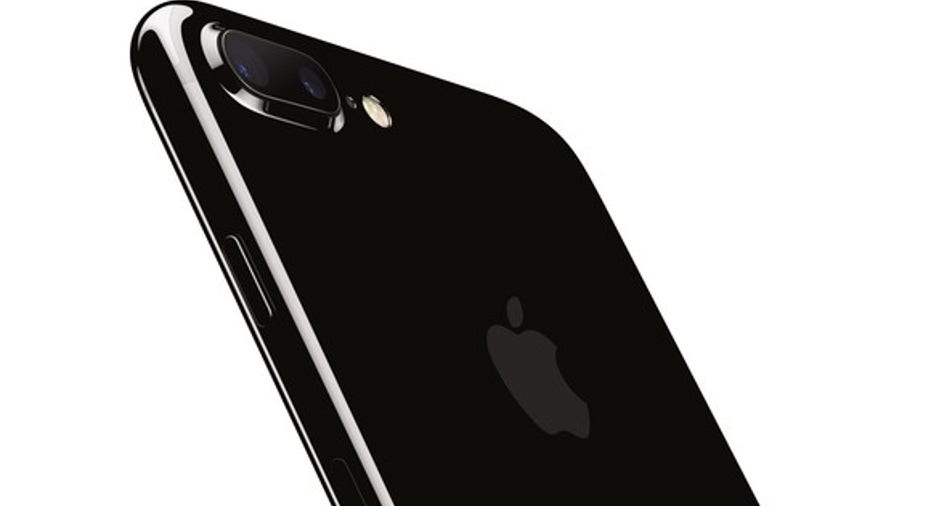Why Apple Inc.'s OLED Transition Won't Hurt Margins

Analyst Steve Milunovich, by way of Barron's, recently argued that Apple's (NASDAQ: AAPL) rumored use of OLED displays in next-generation iPhone models creates "an opportunity for a substantial form-factor change that could be the catalyst to accelerating iPhone growth."
Image source: Apple.
However, the analyst speculates that "margins might decline if build cost increases outstrip higher prices." He adds that "Apple could end up selling Plus phones at closer to regular size prices."
Although it's true that Apple's gross profit margins would obviously decline in the case that manufacturing costs go up by more than average selling prices do generation over generation (and that's a given), I doubt that Apple's rumored adoption of OLED-based displays next year will drive that. Here's why.
OLED likely for premium iPhone only in Apple's next product cycle
The current rumor, which comes from generally reliable Japanese publication Nikkei, is that Apple is planning three iPhone models next year -- ones with 4.7-inch, 5.0-inch, and 5.5-inch displays. Only the variant with a 5.5-inch display is expected to include a curved OLED display; the other two models are expected to use liquid crystal displays.
Although prices for the devices haven't leaked, it stands to reason to expect the 4.7-inch and 5.0-inch models to come in at roughly the same price points as the prior iPhone models. The new 5.5-inch model would presumably come in at an even higher price point.
For those premium models, I'd expect Apple to limit them to 128-gigabyte and 256-gigabyte storage configurations, in line with what the company is doing with the jet-black iPhone 7 and iPhone 7 Plus today, and I'd expect at least a $100 price premium between 5.0-inch and 5.5-inch iPhone models with comparable storage capacities.
I find it extremely unlikely that the costs of the curved OLED display and the additional device manufacturing complexity will outweigh such a significant pricing premium.
If anything, the OLED iPhone models may carry higher margins
A "premium" iPhone with a curved display and, potentially, other points of differentiation relative to the more mainstream models would be quite a novel device. For more price-insensitive iPhone buyers, and I'd suspect that there are a fair number of them, the improved display quality and overall device aesthetic could be worth a significant premium.
In that case, Apple could not only charge enough for the next-generation 5.5-inch iPhone to maintain a similar margin structure to its more mainstream models, but it would also probably be able to up its margins on the device.
What about the rest of the iPhone lineup?
It's likely to only be a matter of time before Apple starts including OLED displays on all of its iPhone models, so it might be reasonable to assume that Apple will eventually need to take a cost-structure hit down the line.
I disagree with that assumption.
OLED displays are currently believed to be more expensive than high-end liquid crystal displays, but as more display panel manufacturers focus their efforts to develop OLED technology and put manufacturing capacity in place to build OLED-based displays, pricing is likely to come down significantly.
I suspect that by the time Apple is ready to use OLED displays across its iPhone lineup, the premium between OLEDs and high-end LCDs will be small enough that wider adoption of OLEDs ultimately won't hurt Apple's bottom line much, if at all.
A secret billion-dollar stock opportunity The world's biggest tech company forgot to show you something, but a few Wall Street analysts and the Fool didn't miss a beat: There's a small company that's powering their brand-new gadgets and the coming revolution in technology. And we think its stock price has nearly unlimited room to run for early in-the-know investors! To be one of them, just click here.
Ashraf Eassa has no position in any stocks mentioned. The Motley Fool owns shares of and recommends Apple. The Motley Fool has the following options: long January 2018 $90 calls on Apple and short January 2018 $95 calls on Apple. Try any of our Foolish newsletter services free for 30 days. We Fools may not all hold the same opinions, but we all believe that considering a diverse range of insights makes us better investors. The Motley Fool has a disclosure policy.